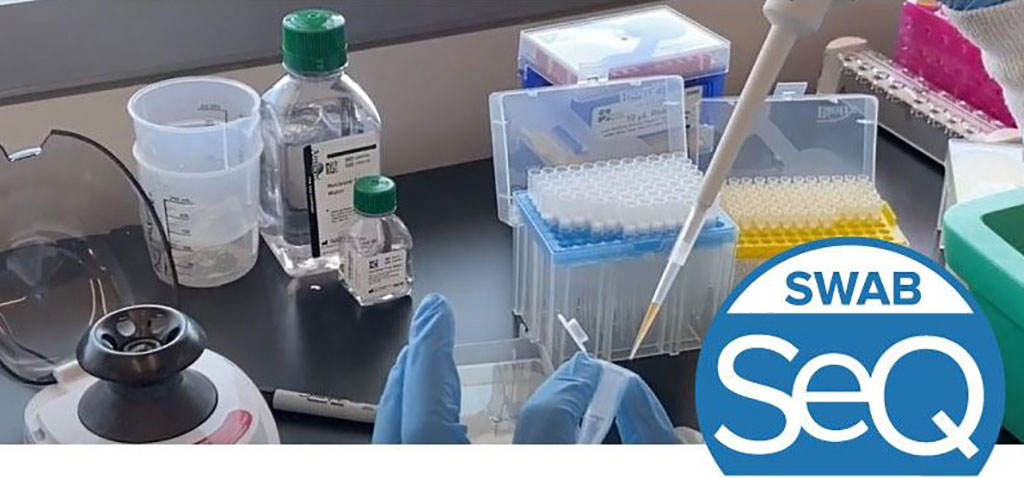New Technological Breakthrough Can Rapidly Scale up Testing for SARS-CoV-2 RNA to Stop Spread of COVID-19
By LabMedica International staff writers
Posted on 05 Jul 2021
A new SARS-CoV-2 testing technology that leverages next-generation sequencing (NGS) to massively scale up testing capacity could stop the spread of COVID-19 and future pathogens.Posted on 05 Jul 2021
The high-throughput COVID-19 testing platform for SARS-CoV-2 named Swab-Seq that has been developed by scientists at UCLA Health (Los Angeles, CA, USA) uses sequencing to detect COVID-19. Swab-Seq uses sample-specific molecular barcodes to simultaneously analyze thousands of samples for the presence or absence of SARS-CoV-2. NGS of pooled samples tagged with sample-specific molecular barcodes enables the testing of thousands of nasal or saliva samples for SARS-CoV-2 RNA in a single run without the need for RNA extraction, offering the potential to rapidly scale up testing to stop the spread of COVID-19.

Illustration
SwabSeq improves on one-step PCR with reverse transcription (RT–PCR) approaches in several key areas. Similar to other sequencing approaches, SwabSeq uses molecular barcodes that are embedded in the RT-PCR primers to uniquely label each sample and enable the simultaneous sequencing of hundreds to thousands of samples in a single run. SwabSeq uses very short reads, reducing sequencing times such that results can be returned in less than 24 hours.
To deliver robust and reliable results at scale, SwabSeq adds to every sample a synthetic in vitro RNA standard with a sequence that is nearly identical to the target in the virus genome, but is easily distinguished by sequencing. SARS-CoV-2 detection is based on the ratio of the counts of true viral sequencing reads to those from the in vitro viral standard. As every sample contains the synthetic RNA, SwabSeq controls for the failure of amplification-samples with no SARS-CoV-2 detected are those in which only in vitro viral standard reads are observed, while those without viral or in vitro viral standard reads are inconclusive.
The RNA control confers a number of additional advantages to the SwabSeq assay. Since the interest lies only in the ratio of real virus to in vitro standard, the PCR can be run to the end point at which all primers are consumed, rather than for a set number of cycles. By driving the reaction to the end point, it becomes possible to overcome the presence of varying amounts of RT and PCR inhibitors and effectively force each sample to have similar amounts of final product. Using in vitro standard RNA with end-point PCR has two important consequences. First, reaction products can be pooled after PCR because the yield of product per sample is mostly determined by the primer concentration and not by the sample concentration. Second, extraction-free samples cab be processed directly. Inhibitors of RT and PCR present in mucosal tissue or saliva should affect both the virus and the in vitro standard equally. End-point PCR overcomes the effect of inhibition, while keeping the ratio of reads between the two RNA species approximately constant, and therefore avoids the need for extraction.
In their latest study, the scientists used SwabSeq to perform 80,000 tests, with an analytical sensitivity and specificity comparable to or better than traditional qPCR tests, in less than two months in a high-complexity Clinical Laboratory Improvement Amendments (CLIA) certified laboratory with turnaround times of less than 24 hours. These results demonstrate the potential of SwabSeq to be used for SARS-CoV-2 testing on an unprecedented scale, offering a potential solution to the need for population-wide testing to stem the pandemic.
Related Links:
UCLA Health













